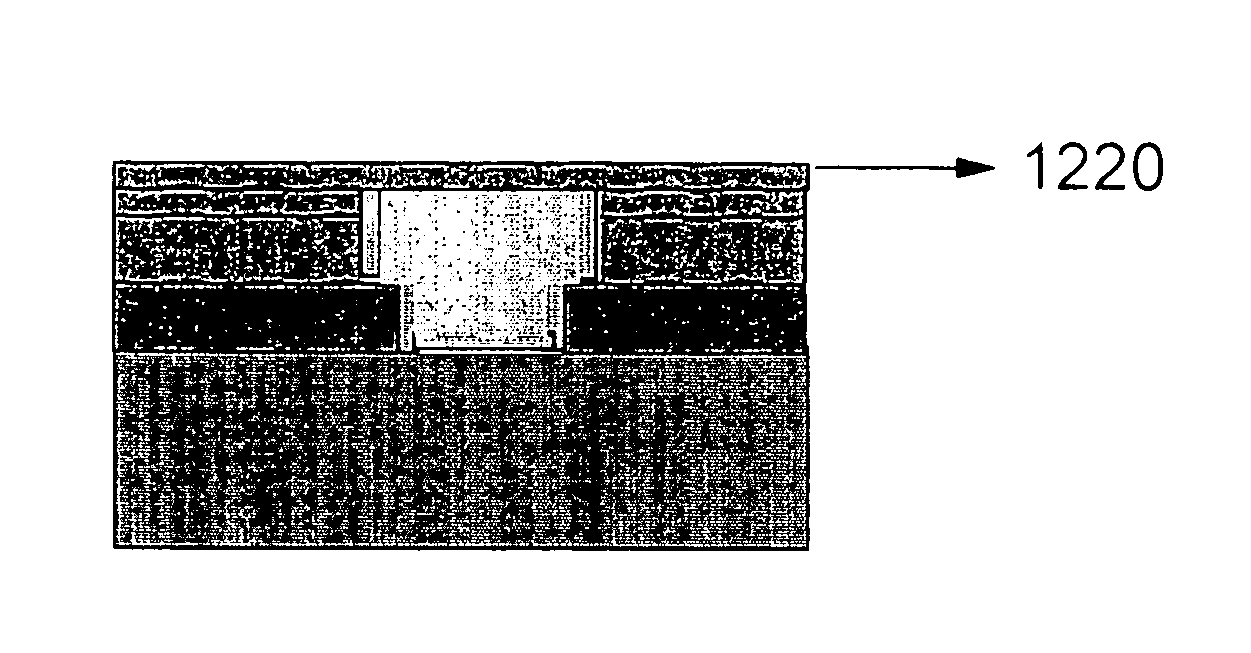Recovery of hydrophobicity of low-k and ultra low-k organosilicate films used as inter metal dielectrics
a technology of organosilicate films and hydrophobicity, applied in the direction of basic electric elements, electrical apparatus, semiconductor devices, etc., can solve the problems of forming silanol, affecting the overall speed of operation of these advanced chips, and organosilicate-based materials are very sensitive to plasma exposure, etc., to achieve the effect of increasing mechanical strength and low cos
- Summary
- Abstract
- Description
- Claims
- Application Information
AI Technical Summary
Benefits of technology
Problems solved by technology
Method used
Image
Examples
embodiment 2
[0062]Embodiment 1 shows the efficacy of difunctional silylation agents in general and BDMADMS in particular. Embodiment 1 also shows that monofunctional silylating agents such as HMDS and TMCS are not as effective as their difunctional counterparts due to the steric hindrance presented by the three methyl moieties on the silylating agent. However, through appropriately replacing the methyl moieties on the silylating agent with the smaller hydrogen moiety, it is possible to overcome this issue. For example, in place of HMDS, the use of tetramethyldisilazane (TMDS) will result in reduced steric hindrance and a more effective silylation reaction. Similarly greater success in silylation can be demonstrated with amino, chloro and alkoxy terminated mono functional silylation agents where the methyl moieties are at least partially replaced by their hydrogen analogs. Thus, silylating agents with the general formula RXHYSi-A where X and Y are integers from 0 to 2 and 3 to 1 respectively can...
embodiment 3
[0063]For applications where it is not necessary to penetrate the pores of the porous low k film, polymeric siloxanes with amino, alkoxy, chloro or silazanes terminated end groups with mono or di alkyl, aryl, vinyl or hydrogen moieties on them can be used to form monolayers on the top surface of the low k film and recover surface hydrophobicity. One example of such a siloxane is amino terminated polydimethylsiloxane. It is important to ensure that the molecular weight is low enough so that the silylating agent flows into the gaps created by the etch process to form trench and via in the organosilicate for the formation of the interconnect structure. As described in the embodiments above, the silylation reaction is followed by a furnace anneal to condense any remaining silanols and form new siloxane bonds that further enhance the mechanical strength.
embodiment 4
[0064]The silylating agent can also be introduced immediately after the film is deposited. The efficacy in this case depends on how many silanols are present in the film after deposition. In this embodiment, the silylation agent can also be introduced following a treatment such as UV / Ozone, or a mildly oxidizing plasma exposure that introduces silanols into the film. As in previous embodiments, the silylation is followed by a thermal anneal. Silylating agents described in any of the above three embodiments can be employed in this manner. In the case of CVD deposited films, the silylation agent can be either co-deposited or introduced into the chamber along with the precursor for the CVD dielectric.
PUM
| Property | Measurement | Unit |
|---|---|---|
| temperature | aaaaa | aaaaa |
| temperature | aaaaa | aaaaa |
| time | aaaaa | aaaaa |
Abstract
Description
Claims
Application Information
 Login to View More
Login to View More - R&D
- Intellectual Property
- Life Sciences
- Materials
- Tech Scout
- Unparalleled Data Quality
- Higher Quality Content
- 60% Fewer Hallucinations
Browse by: Latest US Patents, China's latest patents, Technical Efficacy Thesaurus, Application Domain, Technology Topic, Popular Technical Reports.
© 2025 PatSnap. All rights reserved.Legal|Privacy policy|Modern Slavery Act Transparency Statement|Sitemap|About US| Contact US: help@patsnap.com



